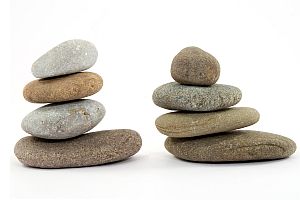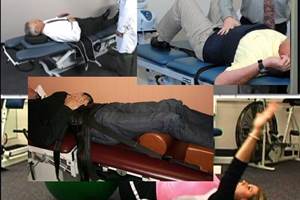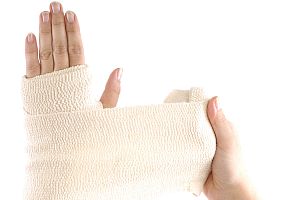Chiropractor Wilmington NC: Menopause and Bone Density
The natural decrease in estrogen associated with menopause can cause many health conditions in women after about the age of 45 (Most women reach menopause between the ages of 45 and 55, but it may also occur much earlier or later.). Unfortunately, bone loss is one of them. In more serious cases, bone loss can lead to osteoporosis, a condition that is associated with low-density, brittle bones. This is why post-menopausal women are actually at a higher risk for fractures, especially of the wrist, hip, and spine. Our chiropractor Wilmington NC explains more.
Menopause is triggered by the decrease of estrogen and progesterone produced in the body. Post-menopausal women between the ages of 45 and 55 can lose an average of two to three percent of their bone density each year, with some women losing up to 20 percent of their bone mass in the first five to seven years following menopause. This can lead to chronic aches and pains as well as increased risk of bone fractures.
Menopause may also cause a condition called osteopenia, or low bone mass, which is a reduction of bone mass below the normal range, but not low enough to be in the range of osteoporosis. This is defined by the World Health Organization to be about 10 to 25 percent below the normal value found in a 30-year-old woman (Most women’s bone mass peaks at around age 30). At 30 percent below, the diagnosis of osteoporosis kicks in. The World Health Organization recommends patients with osteopenia be further evaluated using various clinical risk factors regarding the need for intervention and therapy such as medication to reduce the risk of fractures.
Since osteopenia and osteoporosis cannot be felt or seen, they are sometimes referred to as “silent diseases”. However, a bone density test can help you and your doctor determine if you need treatment. According to the National Osteoporosis Foundation, “A bone density test shows the amount of bone a person has in the hip, spine, or other bones. It is routinely recommended for postmenopausal women and men age 50 and older and is how osteoporosis is diagnosed in older people. Bone density tests are usually only done for premenopausal women if they break several bones easily or break bones that are unusual for their age, such as bones in the hip or spine.”
Hormone therapy can be valuable for the inhibition of osteoporosis and incapacitating hip and spine fractures in post-menopausal women. Hormone replacement therapy, or estrogen therapy, decreases hip fractures by 33 to 36 percent. While estrogen therapy is approved for osteoporosis and fracture reduction, it’s important to understand that hormone therapy has its own risks and isn’t appropriate for everyone. This is why hormone therapy is no longer routinely recommended for most women solely for this purpose. Large studies have shown that women using hormone replacement therapy may be at an elevated risk of blood clots, stroke, and breast cancer.
The good news for women-pre-menopausal, menopausal and post-menopausal-is that there are lifestyle choices and healthcare interventions that can help increase bone density and delay or prevent osteopenia or osteoporosis.
Of course, earlier is better when it comes to building bone mass. The more bone mass you have when you reach menopause, the lower your risk. In this regard, diet and exercise are the keys to success:
* Calcium intake of 1,200 to 1,500 milligrams a day and vitamin D intake of 1,000 to 2,000 international units daily (IU/day) can help prevent bone loss and preserve bone density.
* Moderate alcohol use of three or more glasses daily is associated with osteoporosis, so keep that in mind when you are trying to mitigate the effects of menopause on your bone density.
* Avoid smoking. This should go without saying.
* Exercise can help to moderate the physical and emotional effects of menopause. It is well-documented that moderate-impact and weight-bearing exercises build bone mass. In addition, aerobic exercise can reduce the risk of heart disease, another health condition that becomes more prevalent after menopause.
If you need a chiropractor Wilmington NC, please contact our office










 People who suffer from long-term neck or back pain Wilmington NC are often frustrated by the lack of
People who suffer from long-term neck or back pain Wilmington NC are often frustrated by the lack of